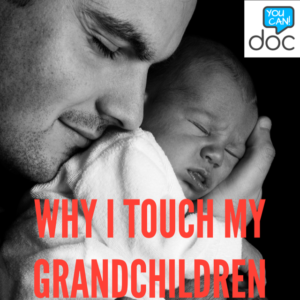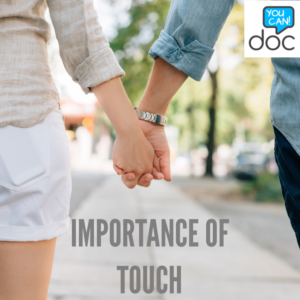by Dr Rick | May 8, 2020 | Codependence, Relationships
RELATIONSHIP WITH A NATIVE-AMERICAN
A few years ago the Feds called and asked if I would do a forensic evaluation on a young man on the Indian Reservation in Southern Utah. I said “Yes” of course. Then they asked if I had any Native-American Culture training. I said “Yes” of course. (I remembered taking a class back in graduate school.)
I drove to Southern Utah and began the interview with the young man. During the interview, he was always looking down making no eye contact. I interpreted his lack of eye contact as resistant and challenged him about this resistance. Well, things got worse as this young Native-American began to become more withdrawn during the interview.
Before the next interview I did a little homework and learned:
Most Native American people avoid prolonged direct eye contact as a sign of respect. It is also a simple matter of being courteous to keep one’s eyes cast downward.
Boy did I feel stupid!
If I wanted to develop a relationship with this Native-American I had to accept his relationship rule of having “no eye contact”-
– whether I liked it or not,
– whether I thought it was right or not, or
– whether it was psychologically healthy or not.
Believe it or not
ALL RELATIONSHIPS HAVE RULES.
Most are unwritten – But usually easily recognized. You want to get along better with your mother-in-law, your spouse, your child, your boss, or anyone else – best to learn and follow the Must-Follow Relationship Rules.
RELATIONSHIP WITH THE SAVIOR
Think about it.
Are there “rules” I need to comply with if I want a personal relationship with the Savior? God?
Of course! Paya tithe, read the scriptures, pray, etc. etc. In fact, James E. Faust identifies this as the world’s greatest need:
…‘What is the greatest need in the world?’ One wisely responded: ‘Is not the greatest need in all of the world for every person to have a personal, ongoing, daily, continuing relationship with the Savior?‘ Having such a relationship can unchain the divinity within us, and nothing can make a greater difference in our lives as we come to know and understand our divine relationship with God. (“A Personal Relationship with the Savior” General Conference, Oct 1976)
Wouldn’t it be tragic if you spent your whole earthly life being “religious” but never actually followed the Savior’s Must-Follow Relationship Rules – and on judgment day He says,
If you want to “get along with somebody“
FIRST: Identify their Must-Follow Relationship Rules.
SECOND: Follow those rules or expectations.
When you follow their relationship rules there will be LESS conflict.
THIRD: If you want to “change the relationship rules of somebody else“
(Sometimes, this is a good idea.)
Be prepared,
When you don’t follow their relationship rules there will be MORE conflict.
WHERE DO “RELATIONSHIP RULES” COME FROM?
It doesn’t matter.
Relationship rules can be a result of: core values, early childhood experiences, trauma, conscious decisions, mental illness; etc etc. The “Must-Follow Relationship Rules” principle still applies-if you want less conflict in a relationship.
SAMPLE RULES
Here are some samples of “negative relationship rules” as we look at a variety of different aspects of a relationship:
 Privacy: Can’t keep anything private. Even when they promise not to tell, within hours everyone knows.
Privacy: Can’t keep anything private. Even when they promise not to tell, within hours everyone knows.
Resolving Conflict: Nothing ever gets resolved. No matter what you do or say. On the next visit it’s like you start all over again-from the beginning.
Communication: Never get a straight answer. No matter how clearly you ask the question.
Physical boundary: No touching. No kissing. No hugs.
Intimacy boundary: No talking about feelings. Never say “I love you.”
Honesty: Don’t tell the truth. Even if they ask.
etc etc
Of course there are “positive relationship rules” too. It doesn’t mean you always have to obey the rules. 🙂 But it does mean your relationship will be more conflict-free (not necessarily healthy) when you identify and follow the “Must-Follow” relationship rules.
CHALLENGE
Getaway from everything that runs by electricity (including a battery).
Sit.
Think.
Identify three “Must-Follow Relationship Rules” others must follow to maintain a relationship with YOU!
dr rick

by Dr Rick | Jan 7, 2019 | Relationships
There is a “touch-need” in each of us.
Human touch — hugging, hand holding, cuddling, and other outlets of physical touch are beneficial, health-wise, physically and emotionally. Research demonstrates that touch contains several health benefits for our physiological and psychological well being.
To understand this, we’ll start on the outside — with the skin. It’s our largest organ, covering about 20 square feet, which is about the size of a twin mattress. If somebody touches you, there’s pressure pushing on your skin at the point of contact. And just under the skin are pressure receptors .These receptors receive pressure stimulation, and send a signal to the brain. The brain in turns releases a variety of brain chemicals such as Oxytocin-for females and Vasopressin-for males.
This fascinating process is clearly visible with modern brain scan technology. We can see which areas of the brain “light up” and the exact time when these bonding hormones are released.
OXYTOCIN, VASOPRESSIN AND TOUCH
For example, research has demonstrated numerous positive effects associated with physical contact and affection. Hugging induces Oxytocin, the “bonding hormone,” that’s known for reducing stress, lowering cortisol levels and most importantly increasing a sense of trust and security. According to one research project conducted at the University of North Carolina, women who receive more hugs from their partners have lower heart rates and blood pressure and higher levels of oxytocin. Oxytocin is a powerful hormone. When we hug or kiss a loved one, oxytocin levels drive up. This bonding hormone plays a huge role in feeling close to one another. (Here’s one more study How Dads bond with toddlers: Brain scans link oxytocin to paternal nurturing)
Social scientists have shown in many studies over the years that supportive touch can have good outcomes in a number of different realms. Consider the following examples: If a teacher touches a student on the back or arm, that student is more likely to participate in class. The more athletes high-five or hug their teammates, the better their game. A touch can make patients like their doctors more. If you touch a bus driver, he’s more likely to let you on for free. If a waitress touches the arm or shoulder of a customer, she may get a larger tip. Human Connections Start With A Friendly Touch.
The knowledge about the bonding hormone is old science. I recall learning of Louann Brizendine, M.D. over 10 years ago. He is neuropsychiatrist and offered compelling evidence of how quickly in a female these brain hormones can be released from simply hugging. Dr. Brizendine concluded:
From an experiment on hugging, we also know that oxytocin is natuarlly released in the brain after a twenty-second hug from a partner – sealing the bond between the huggers and triggering the brain’s trust circuts. Hooked: New Science on How Casual Sex is Affecting Our Children, 2008 pg.39
Vasopressin functions in a similar way for males as Oxytocin does for females. Touch is like a language and you should learn how to use it.
 MY GRANDCHILDREN AND TOUCH
MY GRANDCHILDREN AND TOUCH
The lesson to be learned:
Take time to cuddle, hold hands, hug and kiss
those you love and those you want to love you!
THE GOOD NEWS BAD NEWS OF TOUCH
The release of these bonding neurochemicals when a person is touched is an involuntary process. These bonding neurochemicals are the cornerstone of the the “Physical Attraction” part of a healthy relationship. As you recall there are three parts of a healthy romantic relationship 💖: Physical Attraction 🔥; Friendship 🤜🤛; and Morals 😇.
The “Bad News ” is that a young teen couple dancing close, holding hands, hugging, kissing etc. will feel in “love” when in fact they are simply experiencing the power of touch.
The “Good News” is that I can wrestle, hug, kiss etc my grandchildren and trigger the same bonding chemicals!!!!!
I make sure I “touch” each of my grandchildren
at least 20 seconds each time I see them.
Even if I have to chase them!
You know what you need to do.
It’s too bad “touch” has such a bad connotaion in our society. 🙁
dr rick @ #docyoucan
OTHER EXAMPLES
CHRIST AND TOUCH
Let’s take a quick look at how “touch” is used in Christ’s ministry.
The power that others experienced while “touching” Christ are illustrated below.
And besought him that they might only touch the hem of his garment: and as many as touched were made perfectly whole. Matthew 14:36
Other examples of Christ’s powerful touch.
And Jesus answered and said, Suffer ye thus far. And he touched his ear, and healed him. Luke 22:51
Here is my favorite. And they brought unto him also infants, that he would touch them… Luke 18:15
There is something powerful that happens when we “touch” one another. Understanding how these “bonding hormones” work enrich are understanding concerning holding hands, hugs, kisses, and yes intimacy.
ENERGY MEDICINE AND TOUCH
Several types of “energy medicines” use light or near-body touch techniques to influence the “energy field” that surrounds the human body. Healing Touch, Qigong, Quantum Touch, Jin Shin Jyutsu, and Reiki are examples of this type of therapeutic approach using a body touch method “to heal.”
NBA AND TOUCH
In 2010 researchers Kraus MW1, Huang C, Keltner D. completed a study entitled: Tactile communication, cooperation, and performance: an ethological study of the NBA. The abstract for the article reads:
Tactile communication, or physical touch, promotes cooperation between people, communicates distinct emotions, soothes in times of stress, and is used to make inferences of warmth and trust. Based on this conceptual analysis, we predicted that in group competition, physical touch would predict increases in both individual and group performance. In an ethological study, we coded the touch behavior of players from the National Basketball Association (NBA) during the 2008-2009 regular season. Consistent with hypotheses, early season touch predicted greater performance for individuals as well as teams later in the season. Additional analyses confirmed that touch predicted improved performance even after accounting for player status, preseason expectations, and early season performance. Moreover, coded cooperative behaviors between teammates explained the association between touch and team performance. Discussion focused on the contributions touch makes to cooperative groups and the potential implications for other group settings. (PsycINFO Database Record)
Privacy: Can’t keep anything private. Even when they promise not to tell, within hours everyone knows.


 MY GRANDCHILDREN AND TOUCH
MY GRANDCHILDREN AND TOUCH